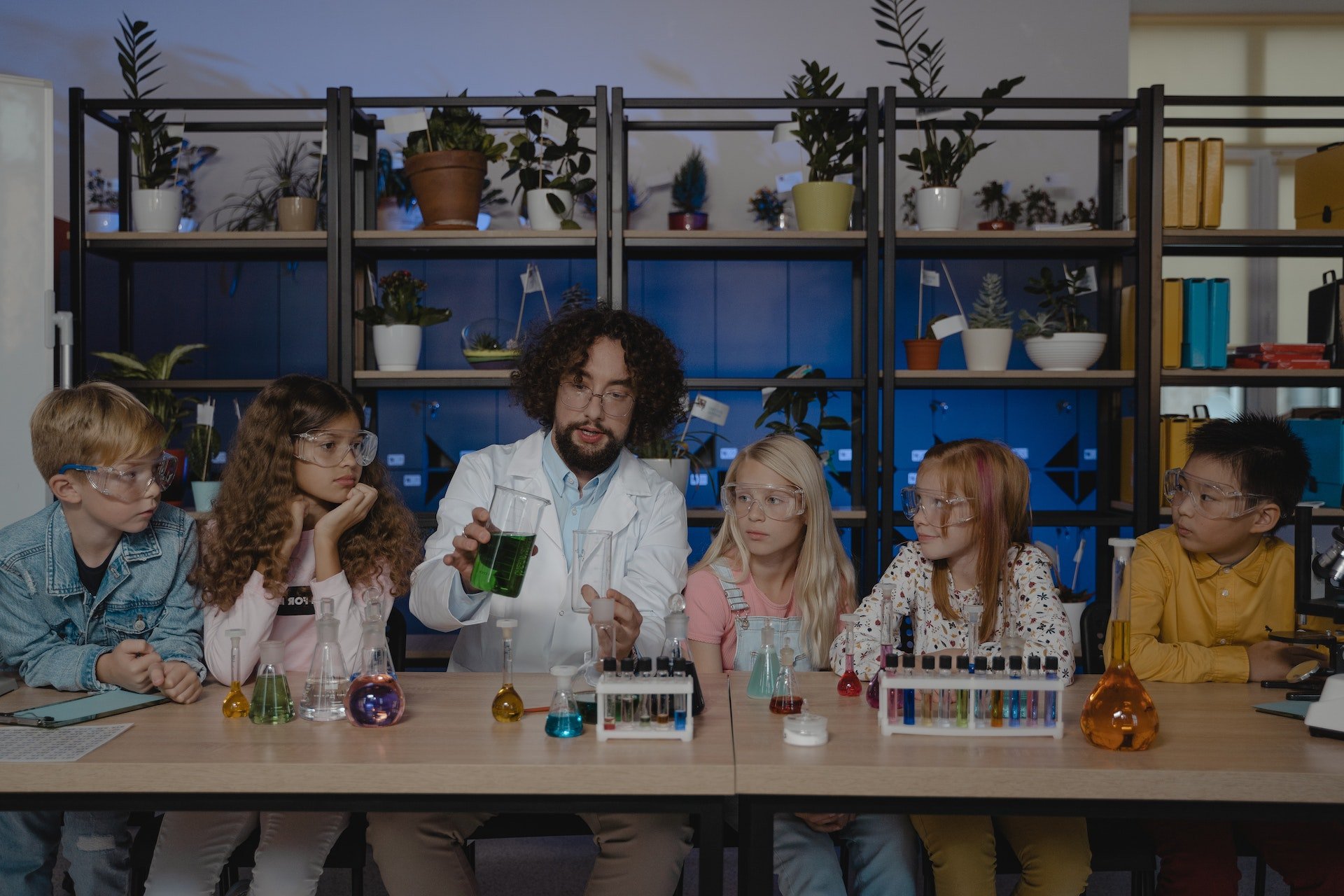According to a 2017 Pew Research Study, not only does there exist a racial and ethnic disparity between high school students who are fond of STEM subjects, but there is also a corresponding relation to performance gaps in test scores and eventual racial and gender disparities in hiring for jobs tied to science, technology, engineering, and math. Though this Pew study focuses on high school students, data from the nation’s 2015 science report card, shows a 36 point score gap between Black and White 4th graders in 2009, only narrowed by 3 points to a 33 point score gap in 2015, and 2019. A similar gap exists between White and Hispanic 4th graders, which also shows a narrowing of the score gap by 8 points between 2009 and 2019. The only group scoring similarly or higher than White is Asian/Pacific Islander, with a score gap of -3 in 2009 improving to a +3 in 2019.
Now, not ignoring the existing socioeconomic factors that play a role in the lack of urban engagement in the subject, there is more to these gaps than can be explained by a simple status of low-income. The fact that these performance gaps exist as early as 4th grade, contributes to the correlation between post secondary education interest and success in the concerned subject matter. In order to fully understand the relationship between race and inequality in STEM, I sat down with Novak Education’s Chief Equity & Inclusion officer, Mirko Chardin, to discuss what factors inside the classroom have an impact on this and what are some steps educators can take to further narrow these performance gaps.
The Self-Fulfilling Prophecy of Belief in Education
"When we believe that all kids can be successful, then we give ourselves permission to do things like universally design, think about equitable practice, think about how to ensure that pathways are developed to support student success."
-Mirko Chardin
In our conversation, Mirko and I reflected on the manifestation power of educators. It is important to decipher what beliefs circle the minds of said educators and their impact on student performance. Whether it is a circumstance where there are beliefs (whether checked or unchecked, overt or covert) that certain students are “naturally destined” to hack it, vs. beliefs that some are not, is an area of importance. Although it may seem obvious that students perform better when their professors have confidence in them, few would have anticipated the extent to which a simple statement from teachers may alter students' whole academic paths and achievement.
A research study conducted in the 1960s revealed something amazing regarding teacher views. While today’s research boards would likely challenge running an experiment like this now due to ethical concerns, there is value in what we learned. Here is how it went: researchers informed instructors that some classes of kids - spanning six grade levels - had been evaluated and shown to be capable of greater intellectual progress than other students. In truth, the pupils had the same achievement levels as the other students and were picked at random for the classes. After a year, the children's IQ test results mirrored the teachers' views. Teachers who had been told that their kids had superior intellectual capacity scored much higher on IQ tests than teachers who were not told anything (Rosenthal and Jacobs, 1968). This study provides compelling evidence that instructors' expectations and opinions about pupils matter. They matter so much that the significance of a simple sentence of reinforced faith in a student is enough to inspire harder work and better responsiveness to feedback to children of color (Cohen & Garcia, 2014). This vicious cycle of low expectations is not exclusive to the United States, as evidenced by a 2018 World Bank survey, which shows that there are a hefty proportion of teachers (25% or more) that believe that they cannot help students who come to school below grade level, or that have personal or financial problems.

Identity, Representation, and Cultural Responsiveness
In terms of representation, there needs to be a conscious, intentional, proactive effort being placed on ensuring that the school classroom, culture, and learning journey is culturally responsive. If not, there will arise circumstances in which BIPOC students feel invisible, especially if they are learning and talking about folks that don’t represent their identities. When they are filled with images, stories, or narratives of individuals who don’t represent them, this communicates an implicit message to these already struggling students, that this is not for you.
-Mirko Chardin
Recent economics studies in the United States that were conducted to analyze school success (Getting beneath the Veil of Effective Schools and Explaining Charter School Effectiveness) found that schools that build a culture that presume all kids can learn at high levels are the most effective at boosting the achievement of children from disadvantaged backgrounds. Now that we know the problem, how do we fix it? Below are strategies for narrowing performance gaps and increasing higher expectations of students.
1. Address The Impact of Expectations
Novice and veteran teacher professional development must directly address the influence of teacher expectations. Teachers can be assisted in developing a growth mindset, which allows them to see the problem of poor student learning levels as something that can be changed. Highlighting strong case studies that demonstrate the problems that teachers and students experience on a daily basis and how they may overcome them can motivate instructors to think on the relationship between their classroom practices and the impact on students. Experiential training methods may provide teachers with direct understanding of how their compassion for and high expectations of students can stimulate learning.
2. Better Practices Influence Better Beliefs
Beliefs can be deeply ingrained and difficult to change, but when instructors succeed in the classroom, it can modify their beliefs about what children can achieve. Encouraging instructors to use effective pedagogical approaches and classroom resources can assist and raise students' learning levels, which could influence teachers' attitudes about student capacities.
3. Say You Believe in Them
It’s that simple! As referenced earlier, simply telling a student you believe in them, especially in regards to constructive feedback, amplifies the student to try the difficult task again, with a new perspective of faith in them by their teachers.
4. Continuously Embrace and Promote Differences
Haeny Yoon, Associate Professor of Early Childhood Education, and Tran Templeton, Assistant Professor of Early Childhood Education at Columbia, both grew up in Asian immigrant neighborhoods and spent their childhoods "between two worlds": their homes and their schools. Yoon and Templeton investigated who has the authority to define what is "normal" in strong thoughts that touched on the importance of food, feeling, memory, history, aesthetics, and location in defining identity. They also showed us that while attempting to adjust to two cultures, young children are not always eager to enjoy and discuss their cultural differences. Their comments and work underlined that educators should reject superficial celebrations of multiculturalism and instead analyze the extent to which their schools' socio-cultural atmosphere encourages, embraces, and promotes difference on a daily basis. This by no means is saying you should not celebrate those cultural moments in your classrooms - we want to embrace all students and traditions, equitably - but merely to make sure to acknowledge and celebrate our differences every day and not just once a year.
Continue Your Learning. Develop strategies to design more equitably for all students in the science classroom.
Additional Resources
- Equity By Design: Delivering on the Power and Promise of UDL
- Mathematics for All: UDL for Elementary Math | UDL for Middle School Math
- How teacher expectations empower student learning
- Six Takeaways for Building Cultural Inclusion and Equity in the Classroom
- Getting beneath the Veil of Effective Schools: Evidence from New York City
- Explaining Charter School Effectiveness
- 2017 PEW Study
- Nations Science Report Card
- For White Folks Who Teach in the Hood ... and the Rest of Y’all Too…Q&A With Chris Emdin



-png.png)
